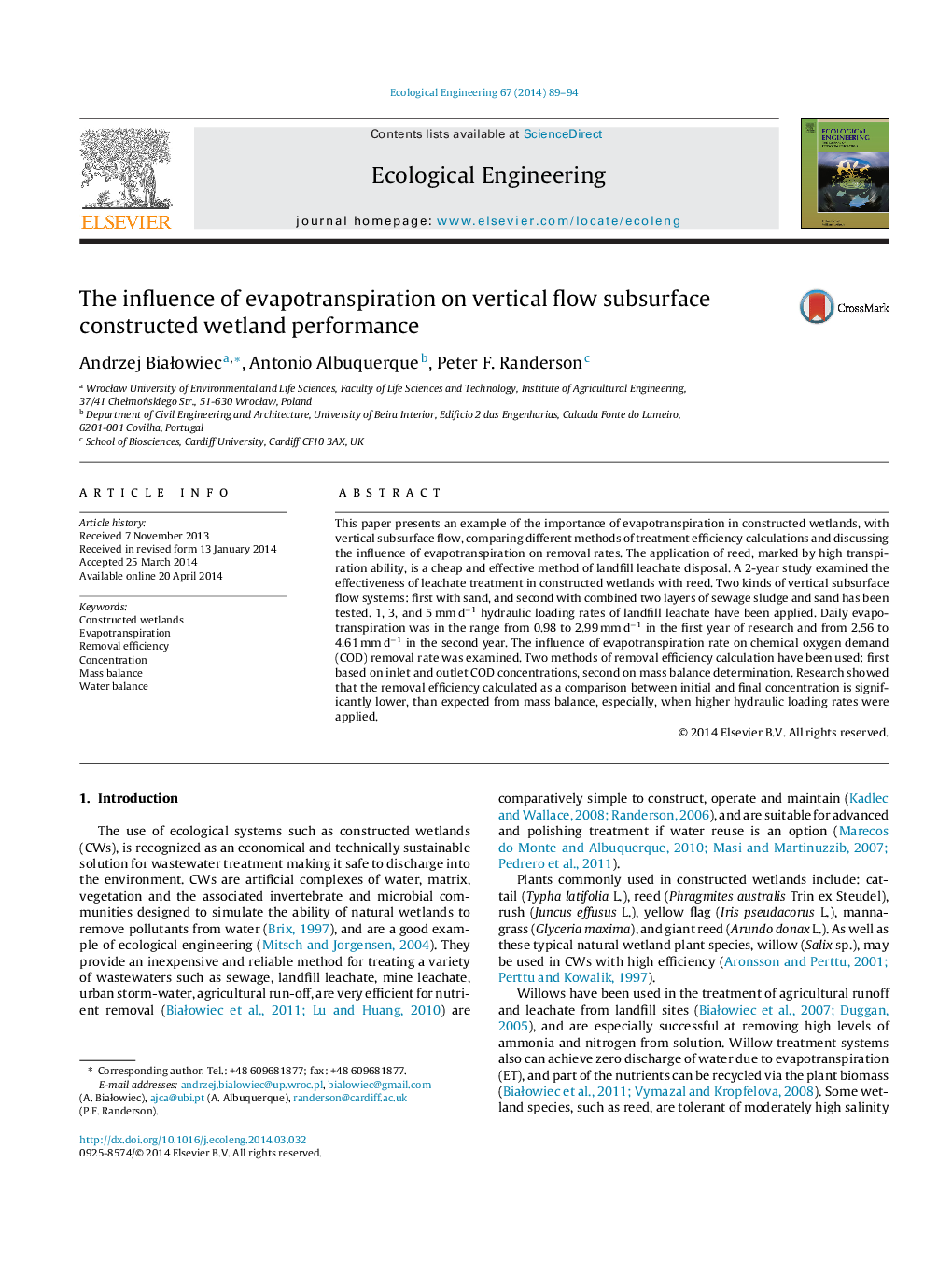| Article ID | Journal | Published Year | Pages | File Type |
|---|---|---|---|---|
| 4389417 | Ecological Engineering | 2014 | 6 Pages |
•Evapotranspiration increases pollutant content in effluent from CW systems.•Evapotranspiration increases pollutant accumulation in CW systems’ soil.•Evapotranspiration decreases the pollutant removal rate in CW systems.•Pollutant removal decreases when evapotranspiration is higher than 2.5 mm d−1.•Mass balance should be considered in removal rate calculation for CW systems.
This paper presents an example of the importance of evapotranspiration in constructed wetlands, with vertical subsurface flow, comparing different methods of treatment efficiency calculations and discussing the influence of evapotranspiration on removal rates. The application of reed, marked by high transpiration ability, is a cheap and effective method of landfill leachate disposal. A 2-year study examined the effectiveness of leachate treatment in constructed wetlands with reed. Two kinds of vertical subsurface flow systems: first with sand, and second with combined two layers of sewage sludge and sand has been tested. 1, 3, and 5 mm d−1 hydraulic loading rates of landfill leachate have been applied. Daily evapotranspiration was in the range from 0.98 to 2.99 mm d−1 in the first year of research and from 2.56 to 4.61 mm d−1 in the second year. The influence of evapotranspiration rate on chemical oxygen demand (COD) removal rate was examined. Two methods of removal efficiency calculation have been used: first based on inlet and outlet COD concentrations, second on mass balance determination. Research showed that the removal efficiency calculated as a comparison between initial and final concentration is significantly lower, than expected from mass balance, especially, when higher hydraulic loading rates were applied.
